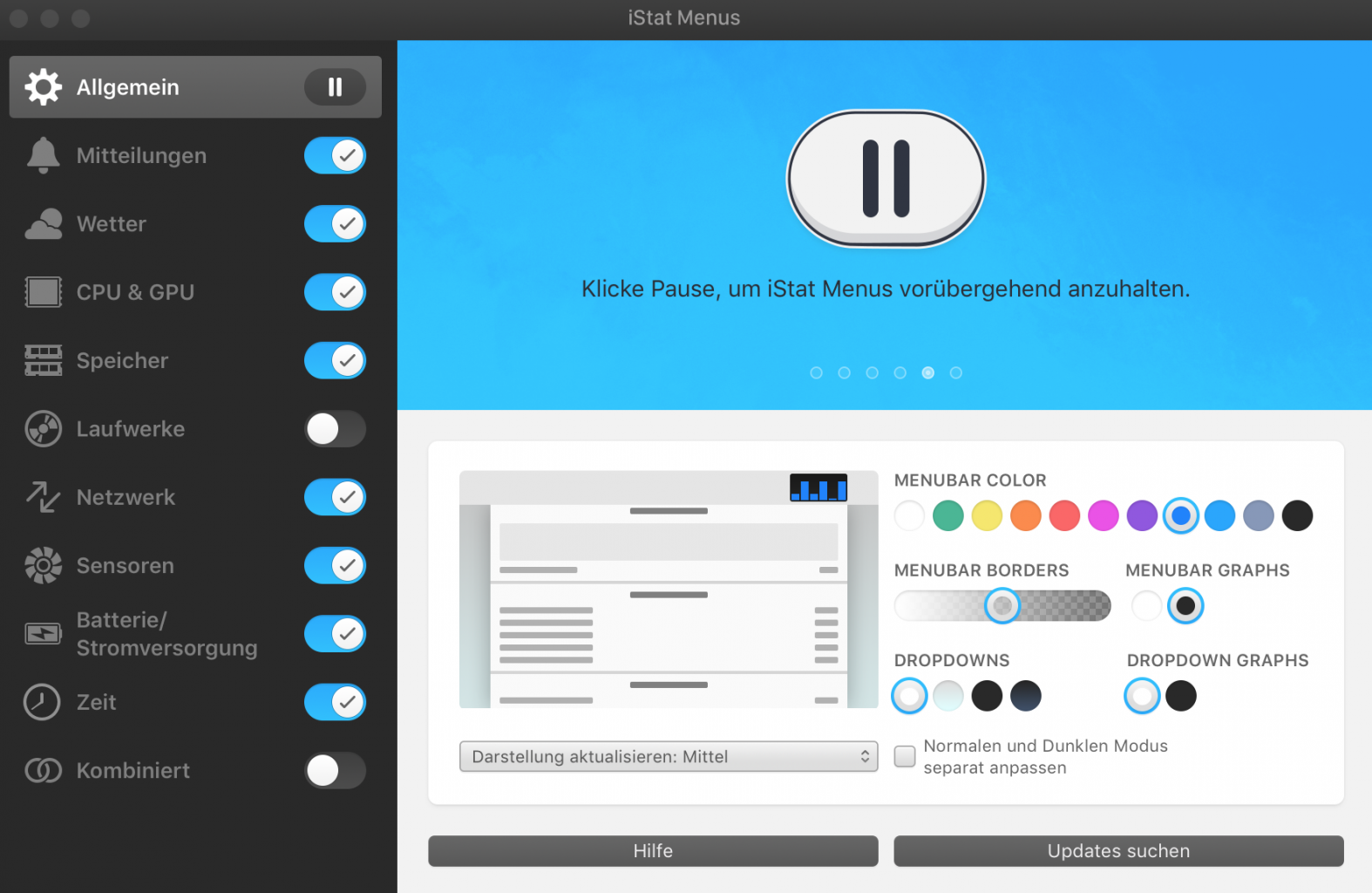

- #Istat menus sensors for mac os x
- #Istat menus sensors update
- #Istat menus sensors manual
- #Istat menus sensors upgrade
- #Istat menus sensors pro
Edit the rule to suit what you are after.Click the + to the right side of the window.To create rules for automatic fan set switching: To use automatic fan set switching, choose Automatic from the Fans menu in the sensor menu bar item. That will let you create a set for normal operation, and also create fan sets to be used under different circumstances. IStat Menus can switch to a different fan set, based on rules you provide. To recall the set, choose it from the Fans menu in the sensor menu bar item. You can now edit the various fan speeds you’d like for this set. Open the iStat Menus app and go to the sensors tab.If you’d like to create a set of fan speeds that can be recalled at any time, this can be done with fan set. With the fan control set to System Controlled from the Sensor menu, iStat Menus will not control fans at all - your Mac’s fans will act as if iStat Menus is not installed.
#Istat menus sensors manual
#Istat menus sensors update
Hopefully an update will bring a simple black one. I also have a nice calendar icon in this way, but it’s red. Personally, I’ve removed Apple’s battery and clock item to use iStat’s one. There’s so much stuff to look at and set in the Preferences I can’t really cover all in a single post, but you can take a look at the screenshots to have an idea.
If it’s the RAM, you get Wired, Active, Inactive and Free together with the top-consuming apps if it’s the battery you can see cycles, health and a progress bar. iStat Menus works like this: you either get an icon or a graph in the menubar, and to see further information about that item you have to click to display another gorgeous black menu with many additional details (numbers, graphs) about that item. You can also set rounded corners and tell the app to display a “Edit in preferences” menu in each dropdown item. The first tab, General, lets you choose between black icons and graphs in the menubar or aqua ones, and I’ve chosen the black ones because I can’t stand colored stuff running up there. It’s even replaced some “native” items from Apple. Guess what, this update turned out to be one of the best Mac apps I’ve tried recently, and after some customization (because you know, I’m kind of a menubar geek) the app it’s now up and running there. I never really considered switching from the simple widget to another app in the menubar, but the new version 3 came out last night and I decided to give it a try.

#Istat menus sensors pro
Also, it’s free.ĭespite iStat Pro being awesome and unobtrusive, Bjango also developed a different version of it, iStat Menus, which unlike the widget is a “real app” that sits in the menubar and allows you to choose which stats to display as icons or small graphs, animated just like in the widget. It may be a little scary and too complex at first, but once you get the hang of it, it becomes a must have tool to understand everything about your Mac in different situations. As Bjango’s tradition is a great looking piece of software but, most of all, it’s useful: when I’m doing something that requires a high consumption of resources like exporting a HD video or downloading many files at the same time, I usually invoke the Dashboard and take a look at what’s going on using this widget.
#Istat menus sensors for mac os x
IStat Pro is a very popular dashboard widget for Mac OS X that lets you quickly check on your Mac stats like fan temperature, battery health, RAM and CPU usage.
#Istat menus sensors upgrade
I’ve always done that with the iStat Pro dashboard widget from Bjango (former iSlayer), but last night I decided to upgrade to iStat Menus 3. But, I think that’s a given that I should keep an eye on its internal stats: you know, stuff like the battery health, CPU usage over time and memory consumption. I think that my machine is still a great one though, with its 4GB of RAM and a pretty capable hard disk: it’s been able to do so many things for me in these two years that I don’t see it being replaced anytime soon, actually. Maybe with some SSD and new processor goodness. I have a late 2008 Macbook Pro, and one could argue that maybe it’s time for me to consider an upgrade to a new model.


 0 kommentar(er)
0 kommentar(er)
